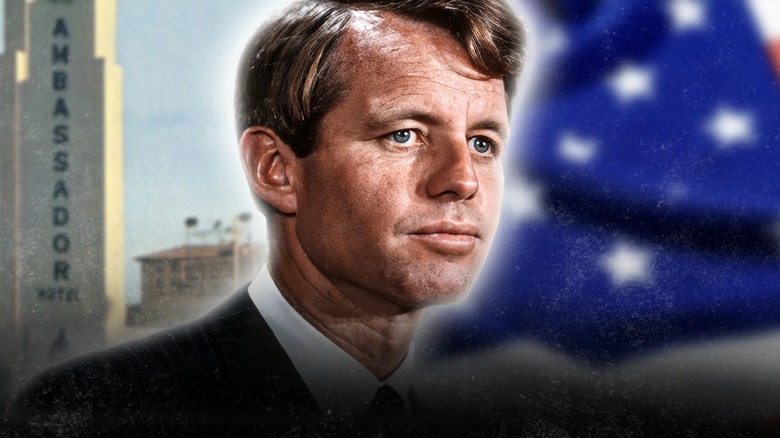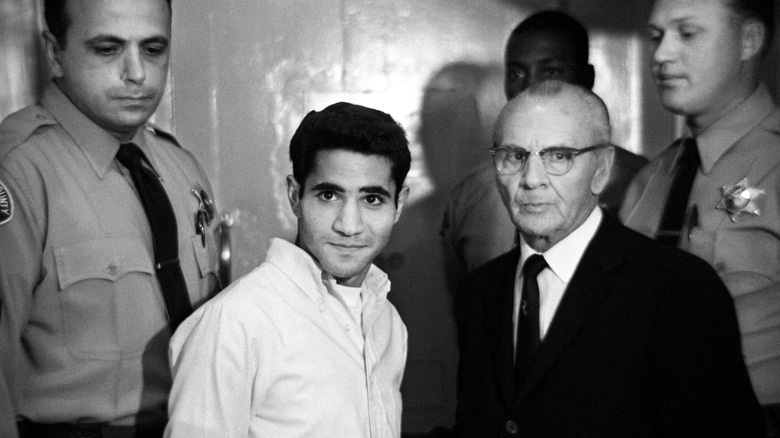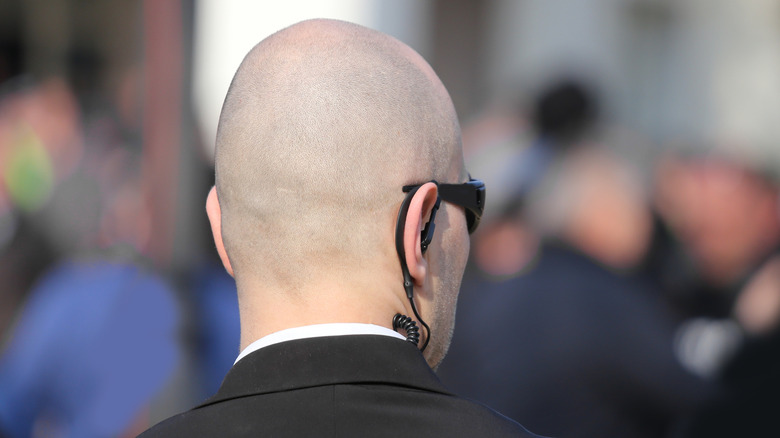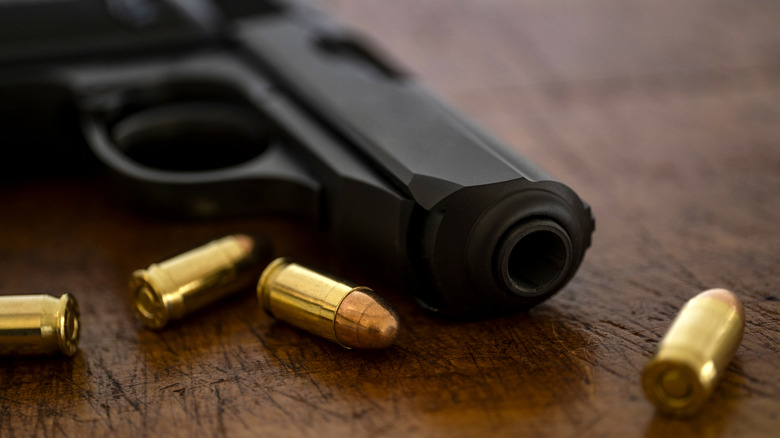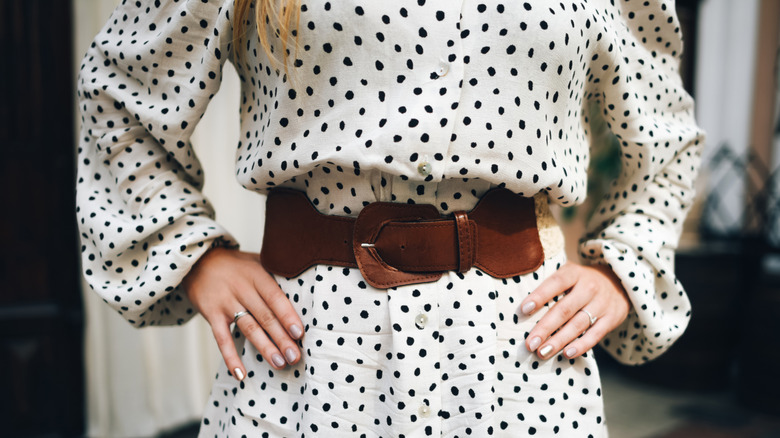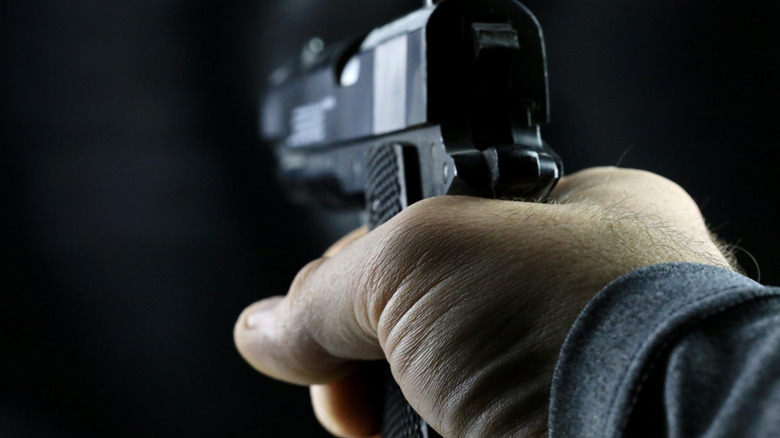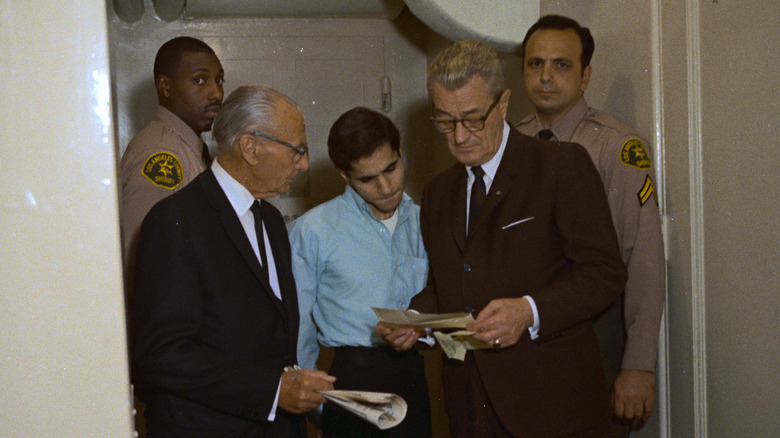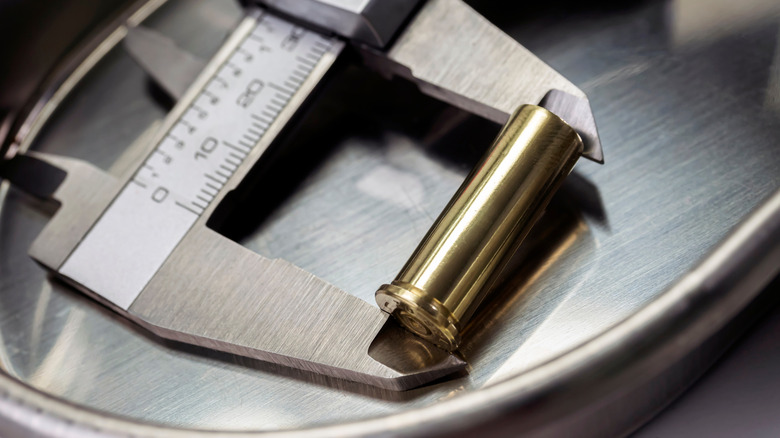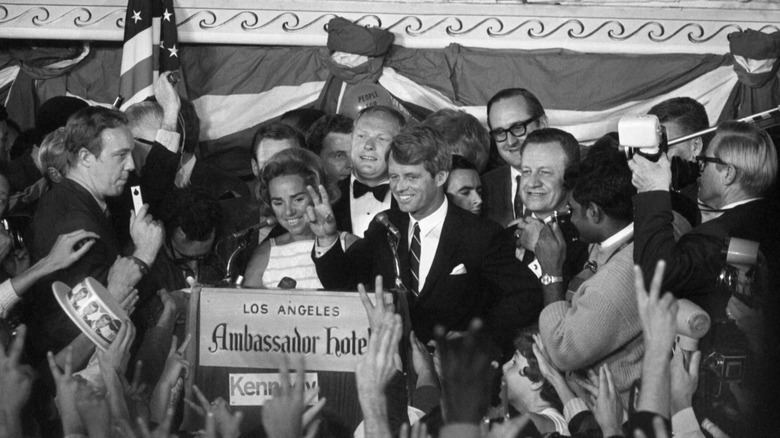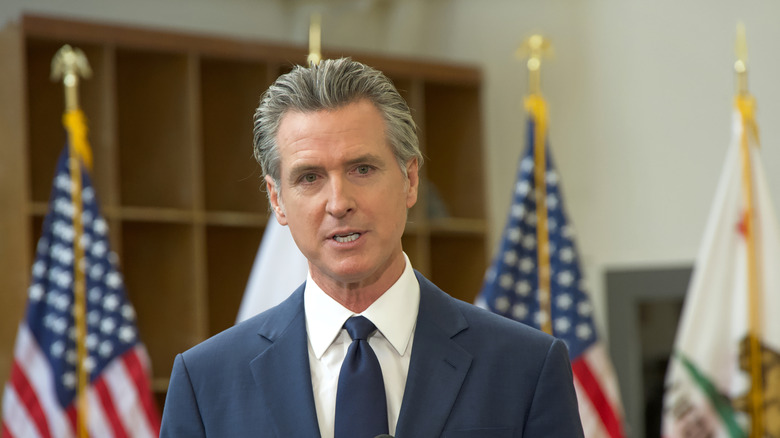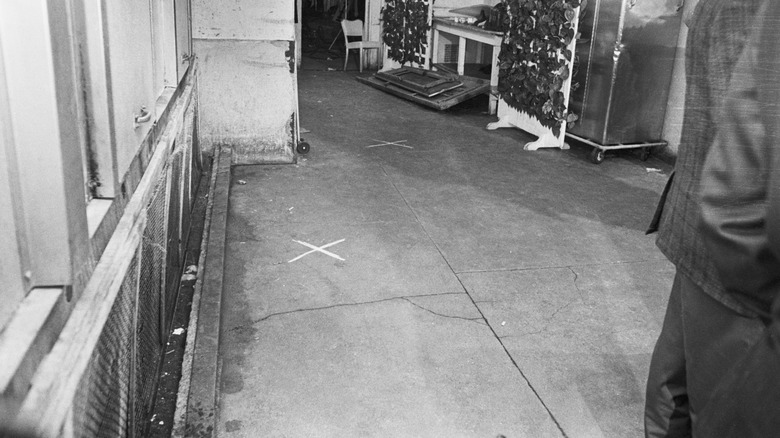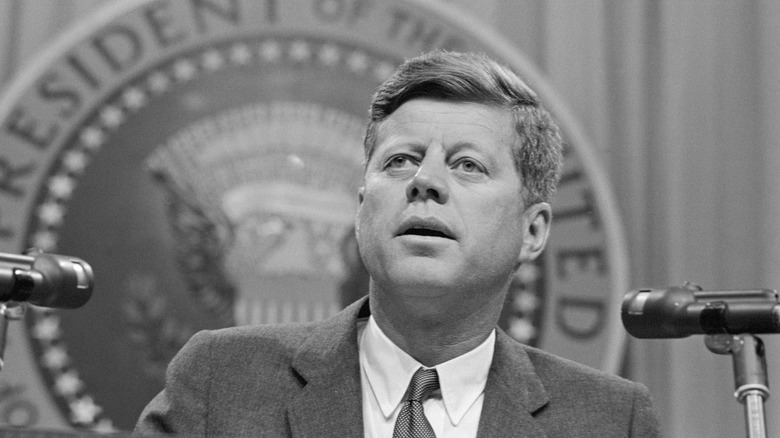Things About Robert F. Kennedy's Assassination That Don't Make Sense
The United States had not recovered from the April 1968 assassination of civil rights leader Martin Luther King Jr., when another high-profile murder rocked the country and its political establishment. On June 5, 1968, Robert F. Kennedy ("RFK") was himself fatally shot after a campaign appearance. Kennedy was a former U.S. attorney general, a senator for New York, a leading candidate for the Democratic nomination for the presidency, and the brother of president John F. Kennedy, who had himself been murdered in November 1963.
RFK's death became one of the most traumatic acts of political violence in modern American history. As with his brother's assassination, the events surrounding Robert F. Kennedy's death have continued to draw interest and speculation, despite the conviction and continued imprisonment of Sirhan Sirhan for the crime. Despite decades of work by armchair detectives (including Kennedy's namesake son), the convoluted circumstances around the assassination have generated lasting questions, with many Americans remaining unsatisfied with the official story.
The murder didn't serve the assassin's political aims
Robert F. Kennedy's assassin, according to official findings, was Sirhan Sirhan, a Jerusalem-born Palestinian with Jordanian citizenship. His family had immigrated to the United States, and Sirhan grew up in Pasadena. Reportedly, Sirhan was vocally critical of the Israeli state, a feeling that only intensified in 1967, when Israel's quick victory over an alliance of Arab states gave it control of additional territories in the region. At trial, Sirhan said he had shot Kennedy because of the senator's support for Israel, carrying out the murder on the one-year anniversary of the war's opening shots.
Unfortunately for Sirhan, it's easy to argue that his assault on Kennedy did nothing to weaken U.S. support for Israel or advance Palestinian goals. With the popular Kennedy no longer in the running, Democrats put up Hubert H. Humphrey. Humphrey and third-party segregationist George Wallace were whomped by Richard Nixon, no charmer but an attractively sober choice in the chaotic '60s. And in 1973, when stalled negotiations over the fallout of the 1967 war led Egypt and Syria to sucker-punch Israel on Yom Kippur, Nixon's government launched an enormous airlift of supplies and arms to Israel at the request of Prime Minister Golda Meir.
This airlift, called Operation Nickel Grass, supplied an eventual Israeli victory that saw the Jewish state capture even more land from its neighbors. While the Sinai Peninsula was eventually returned to Egypt as part of a peace treaty, the Golan Heights, West Bank, and Gaza Strip remain under Israeli control, and it is difficult to imagine the emergence of a Palestinian state in the near future.
RFK had no Secret Service protection
While its responsibilities are broader, the U.S. Secret Service is best known for its central position in the physical protection of the president and other VIPs. It's a coincidence that the organization was established in 1865, the year Abraham Lincoln was assassinated; it's anything but a coincidence that Congress charged them with the full-time protection of presidents in 1901, when William McKinley was assassinated. The Secret Service took up this duty in 1902 and has held it ever since.
To modern viewers, it seems bizarre that Robert Kennedy did not have Secret Service protection: He was a prominent politician, a likely major-party presidential candidate, and the brother of a president whose assassination had been the Secret Service's most recent high-profile failure. Former presidents, their wives and widows, and their children had been pulled under the Secret Service umbrella in 1965 (no one wanted to risk the woman who was not yet Jackie O), but apparently, it had not occurred to anyone that candidates would be assassination targets. RFK's death shattered this complacency, and since 1968, Secret Service protection has been extended to major presidential candidates.
In an uncomfortable irony, the 2024 presidential election saw controversy over extending such protections to RFK's son. Robert Kennedy Jr.'s candidacy was not universally considered "major," but after unnerving incidents involving trespassers at Kennedy's home and events, as well as an assassination attempt against once-and-future president Donald Trump, Joe Biden extended protection to the younger Kennedy for the remainder of his campaign.
How many shots were fired?
It should be a simple question: How many shots were fired that night? The standard answer is "eight," because Sirhan Sirhan's revolver held eight bullets. Three hit Robert Kennedy, with a fourth passing through the shoulder pad of his coat. Five additional people were injured (all survived), which is consistent with eight shots having been fired if a bullet went through the coat and hit someone else.
So how were 14 bullets found in the vicinity, per a Guardian report? Additionally, witnesses would state in later years that eight bullets sounds like too few, claiming they had heard 12 to 14 shots. Paul Schrade, who survived a head wound during the attack, agreed with an acoustics expert who analyzed a tape of the assassination and identified 13 shots, thought it's important to note that other people hear only eight. (A woman's screams on the tape, probably those of Kennedy's wife Ethel, complicate analysis, as does the fact that the position of the recorder relative to Kennedy and Sirhan is not known.) The number of shots is only one of the questions about the mechanics of the shooting: Ballistics and the direction of the shots also raise questions.
Who was the girl in the polka-dot dress?
Conspiracy theories about the assassination of Robert F. Kennedy generally take for granted that Sirhan Sirhan didn't act alone — you do need more than one person for a conspiracy, after all — but was manipulated, brainwashed, or otherwise dragooned into shooting at Kennedy as part of a broader plot to murder the senator. A figure that pops up in discussions of who could have been handling Sirhan is a "girl in a polka-dot dress."
Polka dots seem like a bold choice for someone involved in a murder conspiracy, but then again, the murder of a sitting senator is hardly a project for the timid. When interviewed after the murder, various witnesses reported a young woman in a dotted dress talking to Sirhan; the specifics of the dress, whether its wearer was pretty or not particularly so, and whether she was blonde or brunette, vary between accounts. (Redheads are apparently above suspicion.) The "girl in the polka-dot dress" is variously reported speaking to a man in a foreign language, standing near or conversing with Sirhan, or even saying, "We shot him!," which is not behavior one expects from an assassin who successfully escapes.
Alleged sightings of the ostensibly suspicious bold-dressed woman are rendered more confusing by the presence at the event of (blonde, pretty) campaign worker Valerie Schulte. Like many other women in this decade of playful fashion, Schulte had chosen a dotted dress. Whether witnesses had seen Schulte, another woman, or both and become confused under stress cannot be definitively answered.
Was there a second shooter?
Those doubting that the official story of the (second) Kennedy assassination is the whole truth often point to the argument that there was more than one gunman. According to this theory, Sirhan Sirhan indeed fired the eight shots in his revolver, injuring several of the people around Robert F. Kennedy, but the shots that killed the senator came from another weapon wielded by a second attacker.
Witnesses, including most notably the injured labor leader Paul Schrade, stated that they heard shots coming from behind Kennedy, where Sirhan was not. Nina Rhodes-Hughes, who was behind Sirhan, registered shots from both Sirhan and another direction. Schrade himself was walking behind Kennedy, but the fact that sound waves bounce and echo means that brief sounds like gunshots are hard for the human ear to locate and track accurately. But there's more than Schrade's perception arguing for this theory: The heavily analyzed audio recording features pairs of "double shots" too close together for a gun like Sirhan's to produce even under ideal conditions, which Sirhan, restrained by bystanders, was decidedly not in.
And then there's the fact that doctors who worked on the injured senator noted that Kennedy had been shot in the back and from below, at close range, even though Sirhan was in front of him. This geometry, counterintuitive at best, does not have a clear explanation, though Kennedy having turned and Sirhan being a relatively short 5'5" may explain it. Fingers have been pointed at a security guard who stood behind Kennedy during the attack, was apparently armed, and was a supporter of Kennedy's likely general-election rival George Wallace. Since the guard died in 2019, his involvement would be difficult to prove to general satisfaction.
Was RFK's killer brainwashed?
It's a dramatic theory, but one that surfaces time and again in discussions of the assassination: Was Sirhan Sirhan brainwashed, or maybe hypnotized? Though he admitted to the murder and explained his motives in court (with reference to a Robert F. Kennedy address promising to arm Israel), Sirhan consistently stated that he did not remember the shooting itself. In this theory, Sirhan was a sacrificial distraction, existing to conceal the real perpetrator and motive.
Building on Sirhan's memory holes, attorney William Pepper argued at a 2011 parole hearing that Sirhan had been "hypno-programmed," set up to shoot at Kennedy by a figure whom Pepper claimed to be able to identify, though he did not. This tactic was part of a spaghetti-at-the-wall approach to the parole hearing that also involved references to the second-gunman theory and claimed remorse by Sirhan ... for a crime he ostensibly did not remember and which he had earlier claimed to have commited after "20 years of malice aforethought" (per ABC News). None of it stuck, Sirhan was not granted parole, and in 2016 a judge formally dismissed the hypnosis theory.
The ballistics evidence is a mess
A reasonable observer, faced with the second-shooter theory and confusion even around the number of shots fired during the incident, might well ask what the ballistics evidence says. Well, it's a mess. Sirhan Sirhan's attorneys for his original trial had consulted a ballistics expert named William Harper, who wrote in an affidavit that markings on a bullet recovered from Robert F. Kennedy's neck did not match a bullet that struck an injured bystander. Pressed by reporters in 1974, however, Harper then said that the differences were not significant enough to conclusively prove that the bullets came from different guns. DeWayne Wolfer, a crime scene investigator, had testified at the trial that the Kennedy and bystander bullets did match, so that's one vote for "match" and one vote for "maybe."
There was so much confusion over the ballistics evidence that in 1975, a Los Angeles judge convened another group of experts, who fired new test bullets from the Sirhan gun and said these bullets did not match the crime scene bullets, but that the three preserved crime scene bullets matched one another (so had been fired from the same weapon, but not Sirhan's revolver). The grim accounting of three bullets in Kennedy and five in survivors accounted for every shot the Sirhan gun could have held. On-site observers noted nearby doorframes that bore bullet-hole-like damage, which would mean more shots. These were discounted as bullet holes by Wolfer, and the frames themselves were discarded after the first trial, making their reexamination and any comparison to Sirhan's weapon impossible.
Why was Kennedy's clothing from that night publicly displayed?
In 2010, the Los Angeles Police Department prepared an exhibit of artifacts related to notorious cases in which it had been involved for display at a Las Vegas conference of murder investigators. Cases represented included the Manson murders, the still-unsolved Black Dahlia killing, the murders of Nicole Brown Simpson and Ronald Goldman, and others. Among the items on display were the shirt, jacket, and tie Robert F. Kennedy had been wearing when he was shot.
An LAPD spokesman argued for the artifacts' value as teaching tools, but the exhibit still drew complaints from the victims' families. Debra Tate, sister of Manson cult victim Sharon, agreed with the exhibit's potential pedagogical value but was upset to have received no notification from the LAPD that they intended to display anything related to her sister's death. (As well she might be!) The Kennedys were less convinced by the police department's justification, and complaints from the family quickly led to the clothing being removed from public display.
Why hasn't Sirhan Sirhan been paroled?
In 2021, Sirhan Sirhan was almost paroled. In his 16th attempt in his then-53 years of incarceration, the 77-year-old Sirhan had convinced the panel that he presented no future threat to the public and that he had been rehabilitated. He planned to live with his brother if released, indicating both family support and a plan for stability. His bid had some surprising supporters: Robert F. Kennedy's sons Douglas and Robert, as well as Paul Schrade, who had been badly injured in the attack. (Douglas spoke movingly of forgiveness; the other Kennedy and Schrade had openly argued that Sirhan has not fired the fatal shots.) The parole board, operating under guidelines that had been updated since Sirhan's last hearing, recommended parole.
Parole was opposed by six of RFK's children and his widow, who penned a group letter arguing against release. They found a sympathetic ear attached to the sleekly coiffed head of California governor Gavin Newsom, who exercised the veto power California governors have over parole decisions to reverse the board's decision and continue Sirhan's imprisonment. (Newsom has also exercised this power to keep Charles Manson followers Leslie Van Houten and Patricia Krenwinkel in prison, among others.)
In 2023, the same board that had recommended release in 2021 declined to do so again, denying the application for parole. The members of the board gave no public comment on the decision, as is standard.
Why did Kennedy exit through the hotel kitchen — and why was Sirhan there?
Robert F.Kennedy was at Los Angeles' Ambassador Hotel for a victory party and address, as he hoped to win the California primary for the Democratic candidate for president in the 1968 election. When it became clear that California was going for Kennedy, he descended from the room in which he'd been watching returns and coverage and passed through the hotel kitchen to a ballroom where he addressed an excited throng. Afterward, he intended to go to a press conference in another room in the hotel, cutting through the kitchen again. On the way, he encountered Sirhan Sirhan.
But why was Kennedy routed through the kitchen? More specifically, he was shot in the pantry, not the natural habitat of senators or Kennedys. The ballroom was very crowded with keyed-up guests whose man had just won a major contest, so dodging the crowd made sense ... but then the "shortcut" around the crowd was itself full of staff interested in meeting Kennedy, who to his credit greeted them and was shaking hands with a busboy when the first shot was fired. Coming so soon after the Martin Luther King assassination, it seems optimistic to the point of naivete to think Kennedy would be safe and unmolested on this path.
Stranger still, how did Sirhan, who in his own telling was very drunk, manage to place himself in the senator's path? If it wasn't an enormous surprise for Kennedy to retreat through the kitchen, neither was it planned. The two men's fatal encounter in the pantry was fairly unlikely — luck of the worst kind.
RFK may have doubted the official explanation of his brother's murder
The Warren Commission investigating the murder of President John F. Kennedy — what became known at the first Kennedy assassination — never received testimony from Robert Kennedy. He had had a say in the commission's makeup but was unwilling to participate further. He refused to read the completed report (perhaps understandably, given its subject), but after being briefed on the matter and counseled by brother Ted, stated publicly that he stood behind the commission's findings. JFK's brother and would-be eventual successor was on record as believing there had been one gunman that day in Dallas: Lee Harvey Oswald.
Rumors that RFK was privately unsatisfied have persisted since, and he certainly wouldn't be the only American who felt there was more to the story of his elder brother's death. A 2007 book by journalist David Talbot, "Brothers: The Hidden History of the Kennedy Years," states that a still-suspicious RFK continued to quietly investigate the circumstances of his brother's assassination in the following years. According to Talbot's work, RFK believed a domestic conspiracy had carried out the murder and intended to press the issue if and when he was elected president. Instead, his own death became the second-most-shocking political murder in the nation's history.
